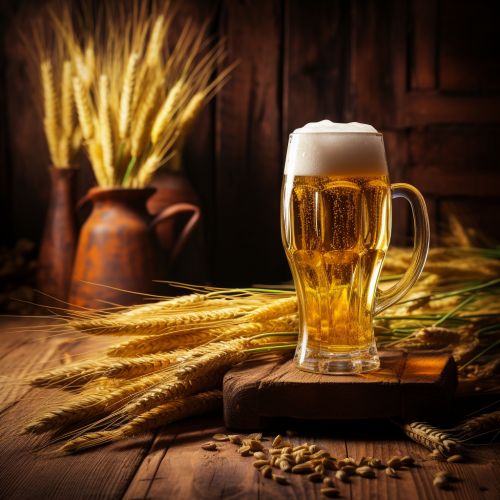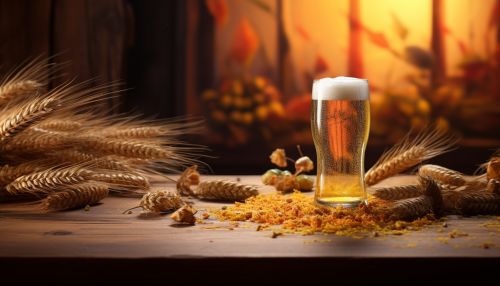Beer
History
Beer is one of the oldest and most widely consumed alcoholic beverages in the world, and the third most popular drink overall after water and tea. Beer is brewed from cereal grains—most commonly from malted barley, though wheat, maize (corn), and rice are also used. During the brewing process, fermentation of the starch sugars in the wort produces ethanol and carbonation in the resulting beer. Most modern beer is brewed with hops, which add bitterness and other flavors and act as a natural preservative and stabilizing agent. Other flavoring agents such as gruit, herbs, or fruits may be included or used instead of hops. In commercial brewing, the natural carbonation effect is often removed during processing and replaced with forced carbonation.


Ingredients
Beer is composed of a complex mix of ingredients, each contributing to the final product's taste, aroma, and appearance. The four primary ingredients in beer are water, malted grain (usually barley), hops, and yeast.
Water
Water makes up about 95% of beer's content. The mineral composition of water has a significant impact on the final flavor of the beer. Different regions have water with different mineral components; as a result, different regions were historically better suited to making certain types of beer, thus giving them a regional character.
Malted Grain
Most beers today are made from barley malt. The malting process involves soaking the barley in water, allowing it to germinate, and then drying it in a kiln. This process develops the enzymes required for modifying the grain's starches into sugars.
Hops
Hops are the flowers (also called seed cones or strobiles) of the hop plant Humulus lupulus. They are used primarily as a flavoring and stability agent in beer, to which, in addition to bitterness, they impart floral, fruity, or citrus flavors and aromas.
Yeast
Yeast is a microorganism that is responsible for fermentation in beer. Yeast metabolizes the sugars extracted from grains, which produces alcohol and carbon dioxide, and influences the strength and flavor of the beer.
Brewing Process
The brewing process involves several steps: malting, mashing, boiling, fermenting, conditioning, filtering, and packaging. Each of these steps requires precision and careful attention to detail, contributing to the final product's quality and consistency.
Styles and Types
There are many styles and types of beer, each with its unique characteristics, flavors, and brewing methods. Some of the most common styles include lagers, ales, stouts, porters, and specialty beers.
Health Effects
Like other alcoholic beverages, beer is associated with both positive and negative health effects. Moderate beer consumption has been linked to certain health benefits, but excessive drinking can lead to serious health problems.
Cultural Impact
Beer has played a significant role in human culture for thousands of years. It has been a part of religious rituals, a dietary staple, a social lubricant, and even a form of currency.
